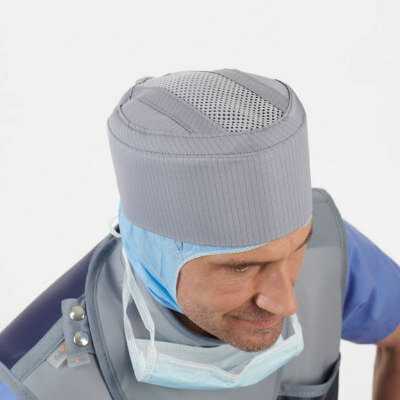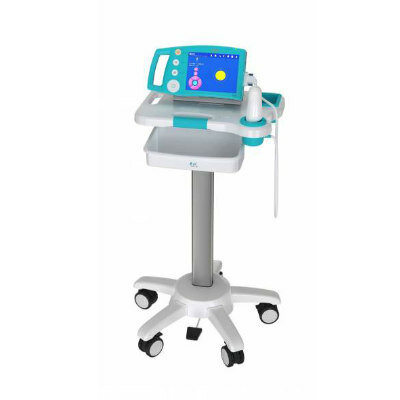Ingestible X-Ray Capsule Could Address Issues in Preventive Screenings for Colonoscopies
|
By MedImaging International staff writers Posted on 03 Feb 2022 |

An ingestible ultra-low dose X-ray capsule aims to significantly increase colorectal cancer (CRC) screening adherence worldwide and help millions of people to stay healthy through preventive screening.
Check-Cap Ltd.’s (Isfiya, Israel; www.check-cap.com) C-Scan system is the first and only preparation-free test to detect precancerous polyps and enable early intervention and cancer prevention. A large part of the screening age population avoids standard screening procedures such as colonoscopy. C-Scan system has the potential to offer a more patient-friendly option, enabling people to get the screening they need.
Once the ingestible capsule C-Scan Cap is swallowed, it travels naturally along the gastrointestinal tract while scanning the inner lining of the colon. C-Scan Cap actively communicates with the second element of the system, C-Scan Track, which records and stores the scanning data. When the screening procedure is over, C-Scan Cap will be excreted naturally, the patient is notified, and the scanning data can be analyzed by using the company’s proprietary software, C-Scan View.
The C-Scan’s technology is based on two physical phenomena related to the interaction of the X-ray photons emitted by the capsule with the contents of the colon and the tissue wall. The first is X-ray fluorescence: When X-ray photons interact with the ingested contrast agent that mixes with the colon content, secondary X-ray fluorescence photons are generated, some of which are back scattered and detected by the x-ray detectors in the capsule. The second phenomenon is Compton scattering: When emitted X-ray photons interact with electrons of atoms in the colon wall and lumen some of the photons scattered by this mechanism head back in the direction of the capsule with an energy correlated to their angle of scatter.
The number of detected X-ray fluorescence photons and Compton back-scattered photons is correlated to the distance between the capsule and the colon wall. As the distance between the capsule and the colon wall increases, presence of content induces higher rates of X-ray fluorescence photons. At the same time, the content attenuates Compton back-scattered photons, hence decreasing the corresponding detection rate. The close proximity of the capsule to the scanning target allows for the use of an ultra-low dose radiation, since a very low x-ray flux is required to obtain sufficient signal-to-noise ratio and good scanning quality.
In a multi-center, open label prospective study, the C-Scan System demonstrated high sensitivity and specificity for the detection of precancerous polyps when compared to FIT (fecal immunochemical test), a commonly used non-invasive colorectal cancer screening test. Colonoscopy was used as the reference method.
"Our prospective single-arm pilot study demonstrated positive safety results and high patient satisfaction with a new and unique preparation-free colon capsule system intended for detection of colorectal polyps and masses," said Elizabeth Rajan, M.D., principal investigator of the study, gastroenterologist and professor of medicine, Mayo Clinic, Rochester. "This study represents a step forward to a prepless approach for CRC screening that may overcome one of the most important deterrents to screening. A multicenter pivotal study is planned in the U.S. to further validate the performance of this technology."
Related Links:
Check-Cap Ltd.
Latest Radiography News
- Novel Breast Imaging System Proves As Effective As Mammography
- AI Assistance Improves Breast-Cancer Screening by Reducing False Positives
- AI Could Boost Clinical Adoption of Chest DDR
- 3D Mammography Almost Halves Breast Cancer Incidence between Two Screening Tests
- AI Model Predicts 5-Year Breast Cancer Risk from Mammograms
- Deep Learning Framework Detects Fractures in X-Ray Images With 99% Accuracy
- Direct AI-Based Medical X-Ray Imaging System a Paradigm-Shift from Conventional DR and CT
- Chest X-Ray AI Solution Automatically Identifies, Categorizes and Highlights Suspicious Areas
- AI Diagnoses Wrist Fractures As Well As Radiologists
- Annual Mammography Beginning At 40 Cuts Breast Cancer Mortality By 42%
- 3D Human GPS Powered By Light Paves Way for Radiation-Free Minimally-Invasive Surgery
- Novel AI Technology to Revolutionize Cancer Detection in Dense Breasts
- AI Solution Provides Radiologists with 'Second Pair' Of Eyes to Detect Breast Cancers
- AI Helps General Radiologists Achieve Specialist-Level Performance in Interpreting Mammograms
- Novel Imaging Technique Could Transform Breast Cancer Detection
- Computer Program Combines AI and Heat-Imaging Technology for Early Breast Cancer Detection
Channels
Radiography
view channel
Novel Breast Imaging System Proves As Effective As Mammography
Breast cancer remains the most frequently diagnosed cancer among women. It is projected that one in eight women will be diagnosed with breast cancer during her lifetime, and one in 42 women who turn 50... Read more
AI Assistance Improves Breast-Cancer Screening by Reducing False Positives
Radiologists typically detect one case of cancer for every 200 mammograms reviewed. However, these evaluations often result in false positives, leading to unnecessary patient recalls for additional testing,... Read moreMRI
view channel
PET/MRI Improves Diagnostic Accuracy for Prostate Cancer Patients
The Prostate Imaging Reporting and Data System (PI-RADS) is a five-point scale to assess potential prostate cancer in MR images. PI-RADS category 3 which offers an unclear suggestion of clinically significant... Read more
Next Generation MR-Guided Focused Ultrasound Ushers In Future of Incisionless Neurosurgery
Essential tremor, often called familial, idiopathic, or benign tremor, leads to uncontrollable shaking that significantly affects a person’s life. When traditional medications do not alleviate symptoms,... Read more
Two-Part MRI Scan Detects Prostate Cancer More Quickly without Compromising Diagnostic Quality
Prostate cancer ranks as the most prevalent cancer among men. Over the last decade, the introduction of MRI scans has significantly transformed the diagnosis process, marking the most substantial advancement... Read moreUltrasound
view channel
Deep Learning Advances Super-Resolution Ultrasound Imaging
Ultrasound localization microscopy (ULM) is an advanced imaging technique that offers high-resolution visualization of microvascular structures. It employs microbubbles, FDA-approved contrast agents, injected... Read more
Novel Ultrasound-Launched Targeted Nanoparticle Eliminates Biofilm and Bacterial Infection
Biofilms, formed by bacteria aggregating into dense communities for protection against harsh environmental conditions, are a significant contributor to various infectious diseases. Biofilms frequently... Read moreNuclear Medicine
view channel
New SPECT/CT Technique Could Change Imaging Practices and Increase Patient Access
The development of lead-212 (212Pb)-PSMA–based targeted alpha therapy (TAT) is garnering significant interest in treating patients with metastatic castration-resistant prostate cancer. The imaging of 212Pb,... Read moreNew Radiotheranostic System Detects and Treats Ovarian Cancer Noninvasively
Ovarian cancer is the most lethal gynecological cancer, with less than a 30% five-year survival rate for those diagnosed in late stages. Despite surgery and platinum-based chemotherapy being the standard... Read more
AI System Automatically and Reliably Detects Cardiac Amyloidosis Using Scintigraphy Imaging
Cardiac amyloidosis, a condition characterized by the buildup of abnormal protein deposits (amyloids) in the heart muscle, severely affects heart function and can lead to heart failure or death without... Read moreGeneral/Advanced Imaging
view channel
New AI Method Captures Uncertainty in Medical Images
In the field of biomedicine, segmentation is the process of annotating pixels from an important structure in medical images, such as organs or cells. Artificial Intelligence (AI) models are utilized to... Read more.jpg)
CT Coronary Angiography Reduces Need for Invasive Tests to Diagnose Coronary Artery Disease
Coronary artery disease (CAD), one of the leading causes of death worldwide, involves the narrowing of coronary arteries due to atherosclerosis, resulting in insufficient blood flow to the heart muscle.... Read more
Novel Blood Test Could Reduce Need for PET Imaging of Patients with Alzheimer’s
Alzheimer's disease (AD), a condition marked by cognitive decline and the presence of beta-amyloid (Aβ) plaques and neurofibrillary tangles in the brain, poses diagnostic challenges. Amyloid positron emission... Read more.jpg)
CT-Based Deep Learning Algorithm Accurately Differentiates Benign From Malignant Vertebral Fractures
The rise in the aging population is expected to result in a corresponding increase in the prevalence of vertebral fractures which can cause back pain or neurologic compromise, leading to impaired function... Read moreImaging IT
view channel
New Google Cloud Medical Imaging Suite Makes Imaging Healthcare Data More Accessible
Medical imaging is a critical tool used to diagnose patients, and there are billions of medical images scanned globally each year. Imaging data accounts for about 90% of all healthcare data1 and, until... Read more
Global AI in Medical Diagnostics Market to Be Driven by Demand for Image Recognition in Radiology
The global artificial intelligence (AI) in medical diagnostics market is expanding with early disease detection being one of its key applications and image recognition becoming a compelling consumer proposition... Read moreIndustry News
view channel
Bayer and Google Partner on New AI Product for Radiologists
Medical imaging data comprises around 90% of all healthcare data, and it is a highly complex and rich clinical data modality and serves as a vital tool for diagnosing patients. Each year, billions of medical... Read more





















